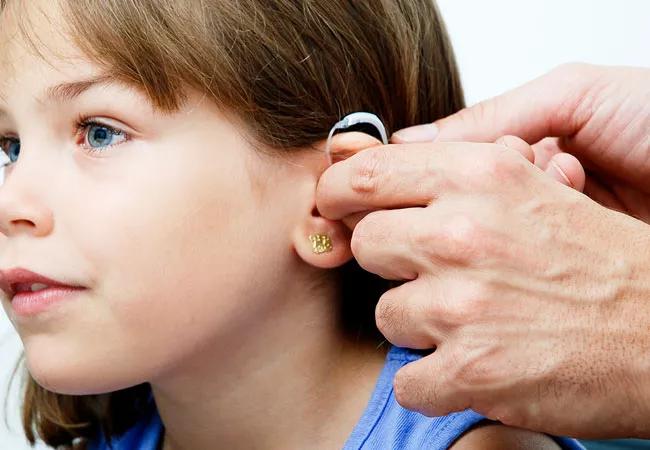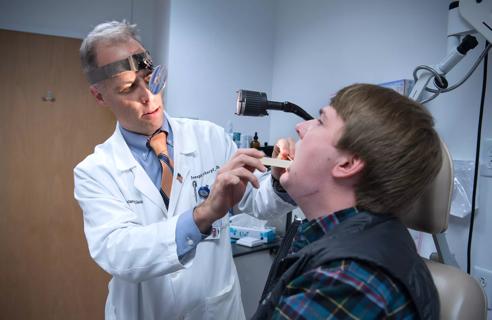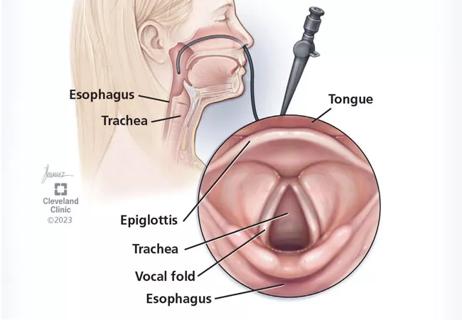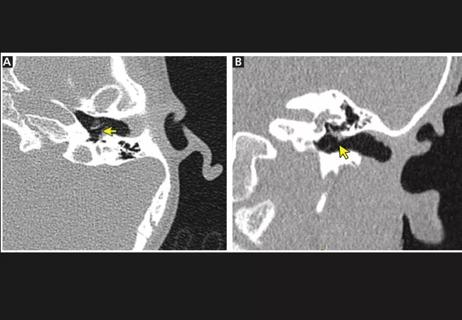Advertisement
New research indicates that the rates of speech and language delay is higher among children with mild-moderate unilarteral hearing loss compared to the general population

Researchers from Cleveland Clinic’s Head & Neck Institute have reported an increased rate of speech and language delay (SLD) in pediatric patients with mild to moderate unilateral sensorineural hearing loss (USNHL). Early detection of hearing loss is critical in pediatric patients since hearing loss can affect speech and language development, cognitive function and school performance. The research was recently published in International Journal of Pediatric Otorhinolaryngology.
Advertisement
Cleveland Clinic is a non-profit academic medical center. Advertising on our site helps support our mission. We do not endorse non-Cleveland Clinic products or services. Policy
The objective of the study was to determine the prevalence of SLD in patients with mild-moderate USNHL and compare it to the prevalence in the general population and patients with more severe USNHL. “With mild-moderate unilateral hearing loss, there are some studies that do show that there is an impact on speech and language development and other similar concerns that are seen with worse unilateral hearing loss,” explains Samantha Anne, MD, the Medical Director of Pediatric Ear and Hearing Disorders in Cleveland Clinic’s Head & Neck Institute and one of the study’s authors. “What we wanted to do is add to the evidence on the impact of mild-moderate hearing loss on children in terms of speech and language development.”
A retrospective chart review was performed to identify patients with USNHL, diagnosed with an audiogram or auditory brainstem response (ABR) over the last 10 years. However, the study included only patients with formal speech, language and auditory function testing which included measures of auditory perception and language performance. All patients were seen by the same physician and all of them were referred for baseline speech and language evaluations. Forty-nine patients with USNHL were identified, and 34 patients with formal speech, language and auditory function testing were included in the study. Twenty of these patients had mild-moderate USNHL, and 14 patients had severe- profound USNHL.
First, the frequency of SLD was evaluated between children with mild to moderate unilateral hearing loss in comparison to children with severe to profound unilateral hearing loss. The frequency of SLD in patients with mild-moderate and severe- profound USNHL was 25% (95% CI, 9–49%) and 50% (95% CI, 23–77%) respectively and this difference was not statistically significant. “Next, we compared the rate of speech and language delay in the mild to moderate unilateral hearing loss group versus what’s reported in a general population,” explains Dr. Anne. “We found that the children who had mild-moderate unilateral hearing loss was close to a quarter of the children. This is much higher than what’s reported in general population, which is about 6%.”
One of the limitations identified by the research group was the small sample size of the study, which impacted the secondary objective of the study. “We were exploring testing measures and how they relate to the severity of hearing loss,” says Dr. Anne. “We wanted to know if children at the more severe and profound hearing loss perform poorer on these tests. We didn’t find a correlation with that, but I anticipate that if we had a bigger volume of patients to look at, we may get more conclusive information.”
Advertisement
Dr. Anne also notes that while these findings help to clarify the relationship between USNHL and SLD, they don’t necessarily change how pediatric patients with USNHL are treated at Cleveland Clinic. “We absolutely will put a hearing aid on a child for unilateral hearing loss, if they are determined to be a candidate by audiologic evaluation,” says Dr. Anne. “For the most part, they will get a hearing aid if they’re candidates. The way we see it, there’s definitely some evidence out there already, and now this study shows that there’s potential for children with even mild-moderate hearing loss to have increased speech-language delay. So to minimize that risk, there’s no question the hearing aid is something that we do here.”
In terms of future research, Dr. Anne and her team are focusing on the benefit of the amplification and determining whether hearing aids over a long period of use reduce these harmful effects on children and if they keep them from developing SLD. “The point of this review was to see if there’s an impact on speech and language delay on these children with the milder hearing losses when it’s one-sided,” says Dr. Anne. “The next step was to see if the hearing aid helps prevent some of these negative impacts on the hearing loss and to see if it’s beneficial to the children. This next stage of the study is currently underway as a multi-institutional study.”
Advertisement

Looking at short-term outcomes in a high-risk population

Recommendations look to change mindset with CI referrals

Research aims to better understand the tumor immune micorenvironment

Research could help direct care pathways for patients with unexplained swallowing difficulties

Strong communication with the patient and a thorough approach are essential

Cleveland Clinic physicians weigh in

New research adds to understanding of an understudied link

The rare condition can cause structural damage if untreated